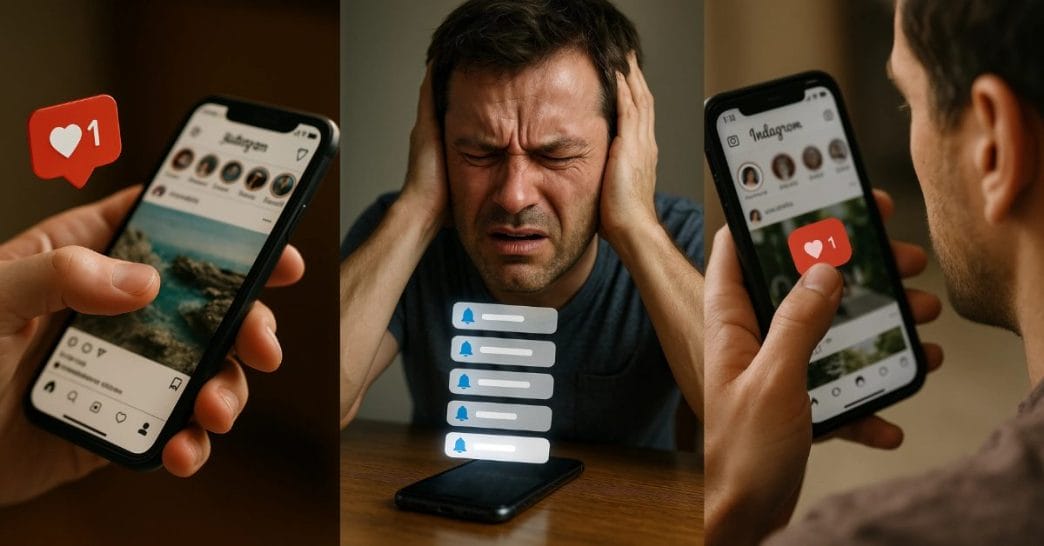The Buzz That Wasn’t There
Picture this: You’re heads-down debugging a production issue. Coffee’s gone cold, headphones on, deep in flow. Suddenly, your leg tingles. You swear your phone just buzzed. You grab it, mid-thought… nothing. No missed call, no Slack DM, no PagerDuty page. Just silence.
That’s phantom vibration syndrome, and if you’re rolling your eyes, here’s the kicker: researchers say over 90% of smartphone users have felt it. It’s your nervous system misfiring after years of constant notification conditioning. You’ve been trained like a lab rat in a dopamine maze.
And if you work in tech, it’s worse. You’re not just dealing with Instagram and WhatsApp. You’re getting pinged by Jira, CI/CD pipelines, pull request comments, PagerDuty alerts, Google Calendar reminders, team standups, and five Slack channels arguing about tabs vs spaces.
Why Notifications Feel Like Digital Gambling
Casinos discovered long ago that the most addictive systems aren’t constant rewards, but variable ones. Pull a slot lever and maybe you win big, maybe nothing. That unpredictability keeps people playing for hours.
Your phone works exactly the same way.
- Some pings are urgent (“Server down!”).
- Some are mildly important (“Code review requested”).
- Most are garbage (“Your food app has a new deal”).
You never know which it is until you check. That uncertainty is addictive. Studies show dopamine spikes during anticipation, not reward which means your brain lights up before you even see what the notification says.
For tech workers, this is multiplied. Critical alerts live in the same feed as low-stakes pings. The result? Your brain treats everything as urgent, because it might be.
Red Badges: The Hidden Error State
Check your phone’s home screen right now. How many red dots do you see?
That color isn’t arbitrary. Red signals danger. In nature it meant “blood” or “fire.” In tech it means “unread.” To engineers, it screams incomplete state like a failing test or broken build. That’s why badges gnaw at you until you tap them.
Instagram uses it. Gmail uses it. Even work tools like Jira use it. Red badges don’t measure importance. They measure unfinished business. And they hijack your need for closure.
The Interruption Economy
Let’s be blunt. Your attention is the product being sold. Every time you respond to a notification, someone profits: advertisers, app developers, platform owners.
- Slack? Measures “messages sent per day.”
- Social apps? Track “daily active users.”
- Even work tools measure “engagement,” not focus.
The side effect is brutal: constant context switching. Research from the University of California shows it takes 23 minutes to regain deep focus after a single interruption. Multiply that by dozens of pings daily and your cognitive energy is shredded by noon.
The Science of Why It Feels So Good (and So Bad)
Two concepts explain the addictiveness:
- Reward Prediction Error
When you expect a notification and don’t get one, dopamine dips. When you finally do get one, dopamine spikes even higher. This high-low cycle creates compulsive checking, phantom buzz included. - Attention Residue
Every alert leaves part of your brain stuck on the task you were interrupted from. Even after you swipe it away, cognitive drag lingers. It’s why post-notification coding feels sluggish and error-prone.
The Tech Twist: Alert Fatigue at Scale
In startups and dev teams, alert culture is real. On-call rotations, CI failures, Slack @channel blasts, all justified as “urgent.” But when everything pings, nothing is truly urgent. This is called alert fatigue.
Hospitals study it with nurses. DevOps teams live it daily. Too many alerts means critical ones get ignored. Worse, constant low-level alerts fry your stress response, leaving you jumpy and exhausted.
Breaking the Cycle: Tactical Fixes for Techies
This isn’t about ditching your phone. It’s about taking back control of when and how you get interrupted.
Audit Like a Sysadmin
Turn off every notification you don’t absolutely need. No one needs “X liked your comment.” Keep only:
- PagerDuty (on-call)
- Build failures
- Calendar reminders for real meetings
Separate Work From Noise
Use Focus Modes (iOS) or Digital Wellbeing (Android) to create profiles:
- Work mode: Only work alerts pass through
- Deep work mode: Only emergencies pass through
- Personal mode: No Slack, no Jira, just life
Hide the Red Dots
Disable app badges completely. Or bury social apps inside folders on page two. If it’s harder to open, you’ll do it less.
Automate the Batching
Use Slack’s scheduled digests or Android’s “Notification Summary” to group non-critical pings. Check them 2–3 times daily instead of 50.
Gray Out Your Candy
Switch your phone to grayscale. It sounds dumb until you try it. Without bright colors, icons lose their pull. Even Instagram feels duller.
Build New Reward Loops
Replace “check phone = dopamine” with “finish task = dopamine.” After a deep focus session, stand, stretch, grab water. Your brain starts craving completion instead of pings.
Why This Matters Beyond You
This isn’t just a personal productivity hack. It’s cultural. Tech companies ship features that monetize attention, then wonder why employees are burned out. Breaking the cycle yourself makes you sharper, but it also models healthier norms for teams drowning in alerts.
Designers and engineers who understand this can build better systems: tools that respect focus instead of hijacking it. Companies that do will quietly outperform those addicted to engagement metrics.
The Realization
Your phone isn’t malfunctioning. It’s doing exactly what it was built to do, keep you checking. That phantom buzz you felt at 2 AM? That’s not an accident. That’s a slot machine in your pocket.
The moment you see it, you can start opting out. Not by ditching tech, but by rewriting your relationship with it.
Notifications are tools, not commands.
Reclaiming that choice is the real win.














